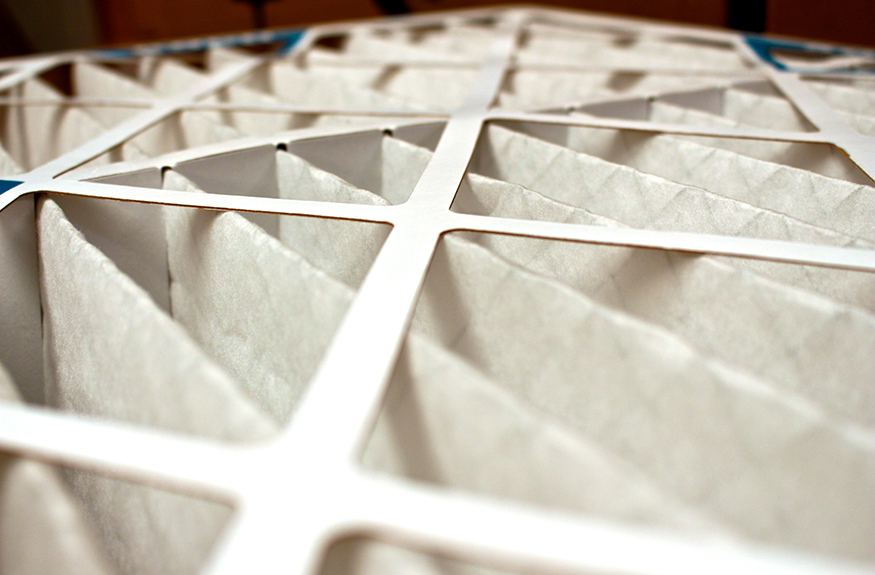NAFA Air Filtration Best Practice Guidelines
The National Air Filtration Association (NAFA) is a non-profit trade association, who’s members include indoor air quality professionals from air filter and component manufacturers, sales and service, and HVAC companies.
NAFA’s mission is “To be The Global Source for Expertise, Education & Best Practices in Air Filtration.” To that end, NAFA holds educational events, publishes several books including the NAFA Guide to Air Filtration as well as a magazine, Air Media. NAFA maintains the Certified Air Filter Specialist and NAFA Certified Technician I & II programs for individuals to educate and elevate themselves in the profession and NAFA develops and maintains best practice guidelines.
The NAFA Best Practice Guidelines were developed to help supplement existing information on the control and cleaning of air through proper filtration. Many organizations recommend “minimum” air cleaning levels. NAFA publishes best practices based on the experience and expertise of its membership along with information and research from the governmental, medical, and scientific communities showing the short- and long-term impact particulate and molecular contaminants have on human health and productivity. NAFA Guidelines recommend and incorporate the “highest level of air filtration standards” for specific applications.
NAFA currently offer guidelines to cover the following indoor air environments:
Airborne Infections Containment Rooms in Health Care Facilities
These best practice guidelines establish criteria for using air filtration in the removal of airborne infectious pathogens from hospital containment rooms for the purpose of protecting staff, patients, and visitors from nosocomial infections.
Commercial Offices
These best practice guidelines establish air filtration guidelines for the removal of particulate contamination for the protection of the air handling equipment and components, as well as providing comfort and a healthy environment for all who work, visit, live and play in these facilities. It will serve to provide owners and facility managers with the necessary information to make educated decisions when providing filtration products for their building, and an essential component of their Indoor Air Quality (IAQ) and life safety program.
Firing Ranges
These best practice guidelines establish air filtration guidelines for the removal of airborne contaminants for the protection of employees and participants in indoor firing ranges.
Higher Education Complexes
These best practice guidelines establish criteria for the removal of particulate and molecular contaminants (please refer to NAFA Guidelines for Molecular Filtration) for the improvement of indoor air quality and protection of HVAC equipment in Higher Education facilities. It serves to provide the facility managers with the necessary tools to make measurable differences to the operation of HVAC systems in their campus through air filtration.
Libraries, Archives & Museums (English & Spanish versions)
These best practice guidelines establish criteria for the removal of particulate and gaseous contaminants for the protection and long-term preservation of historical documents and artifacts. They serve to provide the conscientious Facility Manager with the necessary guidelines to make measurable differences of air quality in his/her building.
Molecular Filtration
These best practice guidelines are designed to provide a general overview of how best to apply molecular filtration in HVAC applications where the need to remove gaseous airborne contaminants exists.
Schools
These best practice guidelines establish criteria for the removal of particulate and molecular contaminants for the improvement of indoor air quality and protection of HVAC equipment in K-12 schools. It serves to provide the facility managers with the necessary tools to make measurable differences to the operation of the HVAC systems in their campus through air filtration.
Spray Finishing Particulate
These best practice guidelines establish air filtration and spray collection guidelines for the removal of airborne contaminants for the protection of the employees, equipment, and environment in commercial and industrial spray booths.
Welding Fumes
These best practice guidelines establish criteria or the removal of particulate and gaseous contaminants from the immediate breathing zone of employees engaged in the process of welding. Filtration guidelines for general ventilation, when applicable, are also addressed.
All of the NAFA Guidelines are available for complimentary download here. The NAFA website also accepts suggestions for new guidelines for development.









